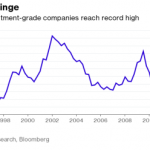Have retail VIX Exchange Traded Products (ETPs) like the iPath S&P 500 VIX Short-Term Futures ETN (VXX), VelocityShares Daily Inverse VIX Short-Term ETN (XIV), ProShares Short VIX Short-Term Futures ETF (SVXY), etc. become large enough to have a meaningful impact on the broader US equity market? This is a question I posed in a recent Wall Street Journal blog and one Vance Harwood and I have been discussing for some time now. The answer, and more importantly the reasons behind it, might surprise you.
The traditional argument goes something like this. VIX products are derivatives of the S&P 500 options market, the VIX being a measure of its 30-day implied volatility, the VIX futures a tradable reflection of where the value of the VIX might be in the future, and the VIX ETPs a portfolio of VIX futures. As a derivative of the S&P 500 options market, many believe these retail ETPs that merely reference the much larger wholesale market for S&P options would have little impact on it. This was certainly my thinking in the mid-2000s during our early development of the first VIX Exchange Traded Note, the VXX.
However, with the growth of interest in VIX ETPs, and particularly the growth in interest in the short volatility products, this argument may no longer hold much water. Let me explain.
To start with, the absolute size of the products is not as important as who holds them and what they do with them. Two retail investors with opposing views on the future of volatility might buy and sell a unit of VXX between themselves effectively creating a contract for difference that has no impact on the greater volatility market. If VXX rises, the investor who is long profits while the investor who is short losses. The net impact to the volatility market of this type of position is zero, which is to say that no net exposure is passed on into the S&P options market.
However, not all ETP trades offset in this way, and there is a growing consensus in the volatility market that the overwhelming retail interest in VIX ETPs is on the short volatility side, i.e short the long products like VXX, and long the inverse products like XIV. This imbalance may be due to investors predicting a decline in equity volatility, but is just as likely to be the result of recently strong returns from strategies looking to harvest the volatility risk premium. See my earlier article Making Volatility Investable.













Leave A Comment